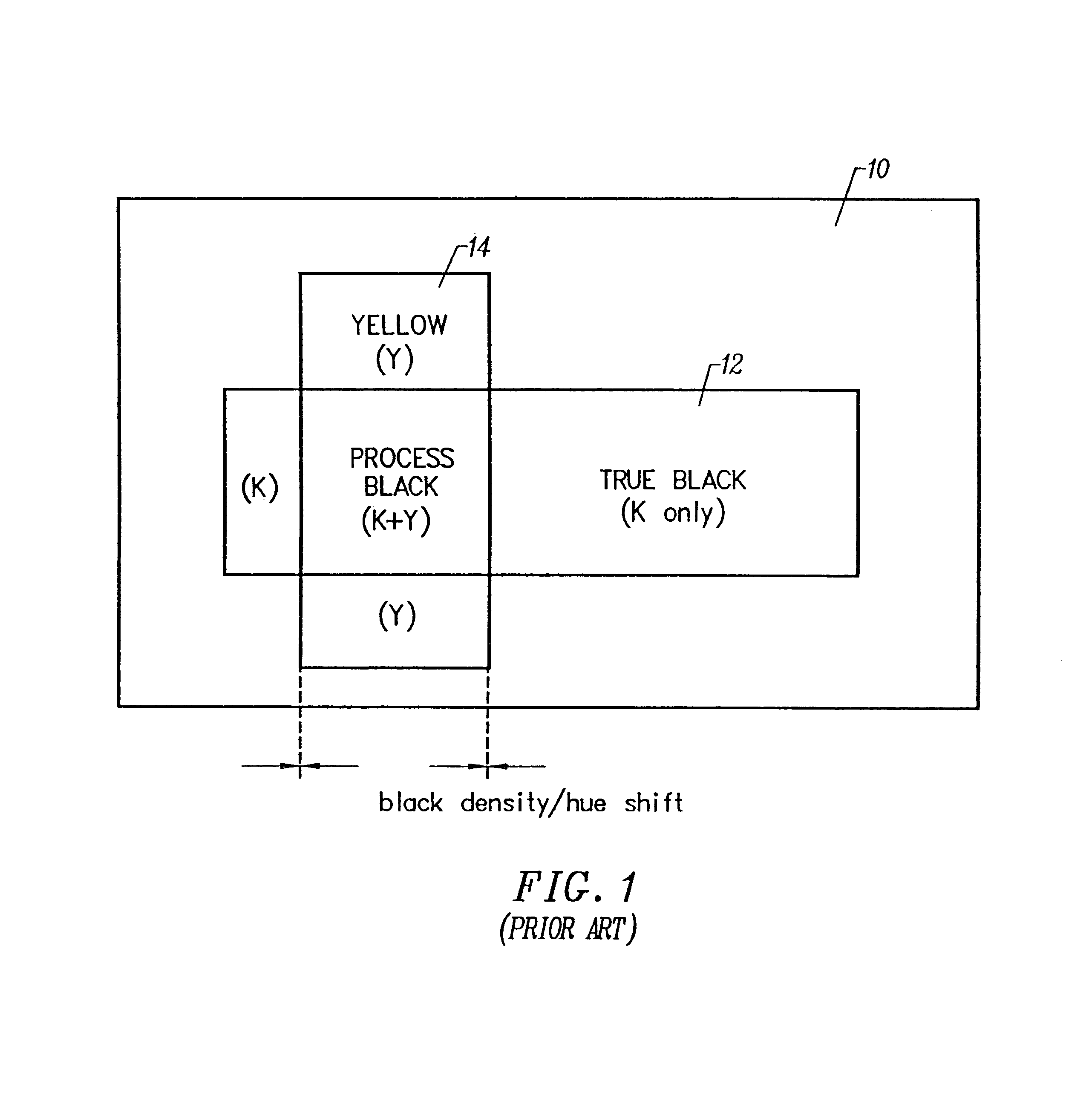Black text printing from page description languages
a technology of page description and black text, applied in the field of color documents, can solve the problems of difficult to have the four color planes perfectly superimposed on the screen of high resolution devices, subject to color plane misregistration, and nearly impossible to print grays consistently with only three colorants
- Summary
- Abstract
- Description
- Claims
- Application Information
AI Technical Summary
Benefits of technology
Problems solved by technology
Method used
Image
Examples
example 1
Postscript Language
A black text overprint implementation for the Postscript opaque, 4-byte, case is as follows (in pseudo C-code):c,m,y,k(b) is the cmyk value of the background immediately before the text is to be rendered; andc,m,y,k(d) is the resulting color.
If the black text overprint mechanism is disabled, the result (regardless of source types and color) is:
c,m,y,k(d)=c,m,y,k(s) / * simple opaque 4-byte operation* /
If the black text overprint mechanism is enabled, the result is:if (object to be rendered is text and color is black: c=m=y=0, k=255)
{ / * black text overprint* / c,m,y,k(d) = c,m,y(b),255 / * background color value is added to the black information inthe k-byte* / }else{ / * ‘normal’ path * / c,m,y,k(d) = c,m,y,k(s)}
example 2
PCL Language
An example of a black text overprint implementation for the PCL language follows. The example is presented in two pseudo C-code parts.
PCL uses a three dimensional color representation, i.e. in the PCL data stream, and inside the PCL interpreter, each color is represented by only three components: c, m, and y. For convenience, each color is encoded on four bytes, where the k-byte is unused until the final conversion of cmy to cmyk, immediately before physical printing.
The expression c,m,y,k(b) is the cmyk value of the background immediately before the text is to be rendered. The expression c,m,y,k(d) is the color that results from combining the source with the background according to a predefined function F. The expression c,m,y,k(t) is the cmyk value of a temporary color needed in this implementation of the invention.
Part 1. Inside the Interpreter
If the black text overprint mechanism is disabled, the result (regardless of source types and color) is:
c,m,y(d)=F(c,m,y(s);c,...
PUM
 Login to View More
Login to View More Abstract
Description
Claims
Application Information
 Login to View More
Login to View More - R&D
- Intellectual Property
- Life Sciences
- Materials
- Tech Scout
- Unparalleled Data Quality
- Higher Quality Content
- 60% Fewer Hallucinations
Browse by: Latest US Patents, China's latest patents, Technical Efficacy Thesaurus, Application Domain, Technology Topic, Popular Technical Reports.
© 2025 PatSnap. All rights reserved.Legal|Privacy policy|Modern Slavery Act Transparency Statement|Sitemap|About US| Contact US: help@patsnap.com



